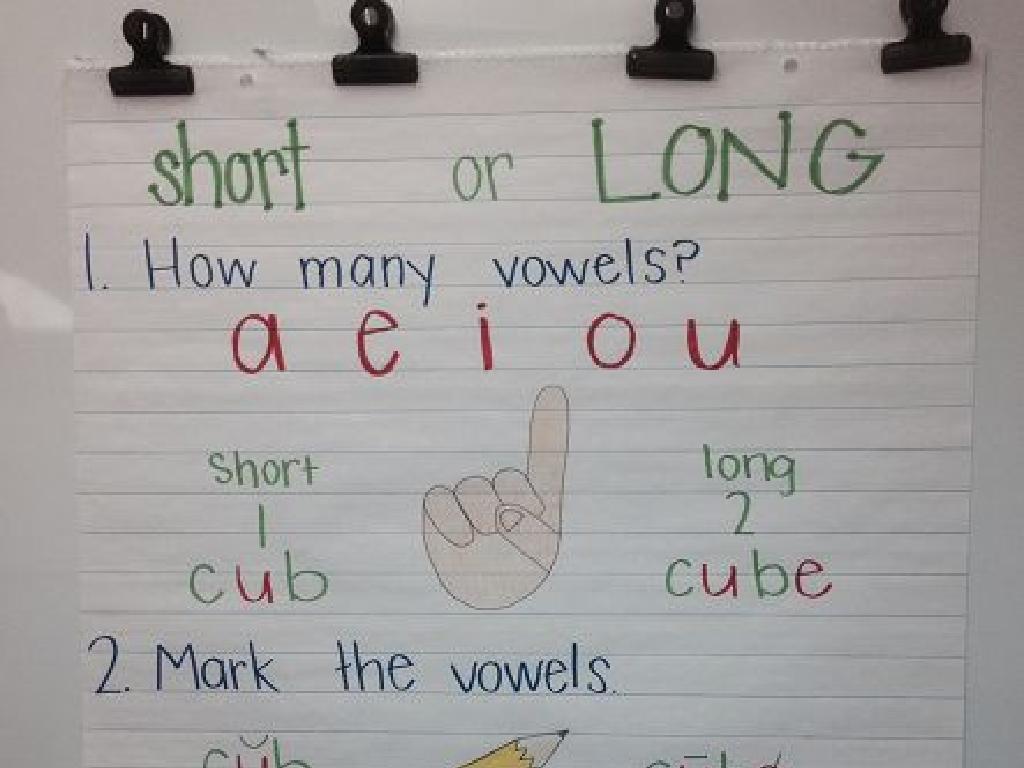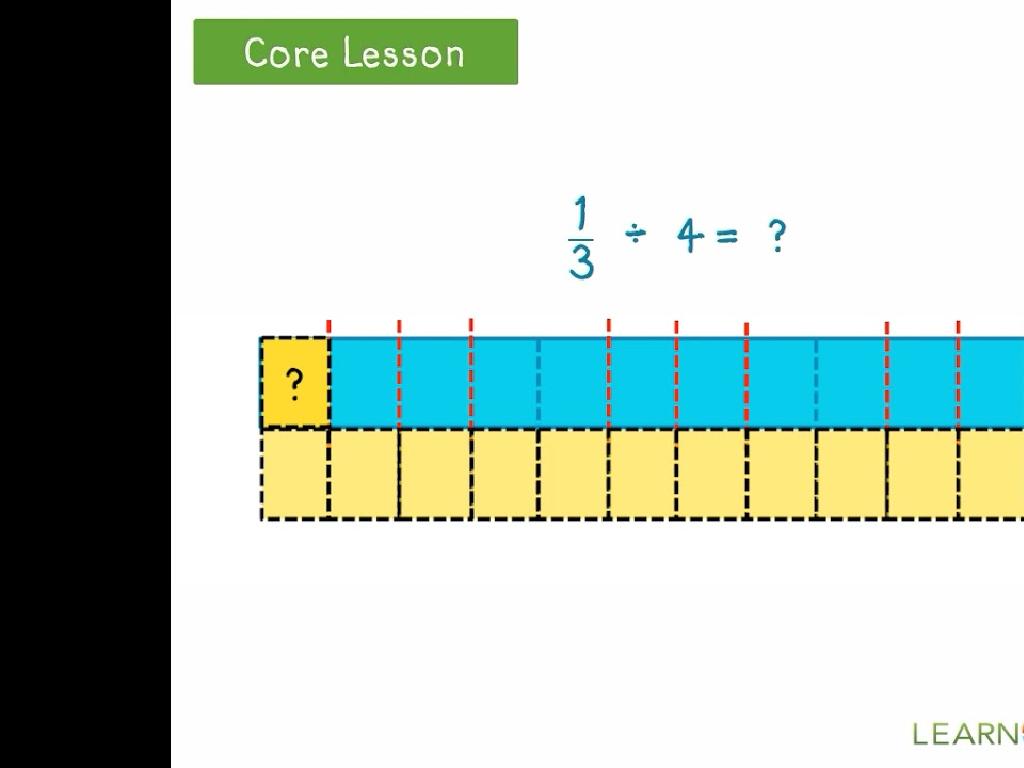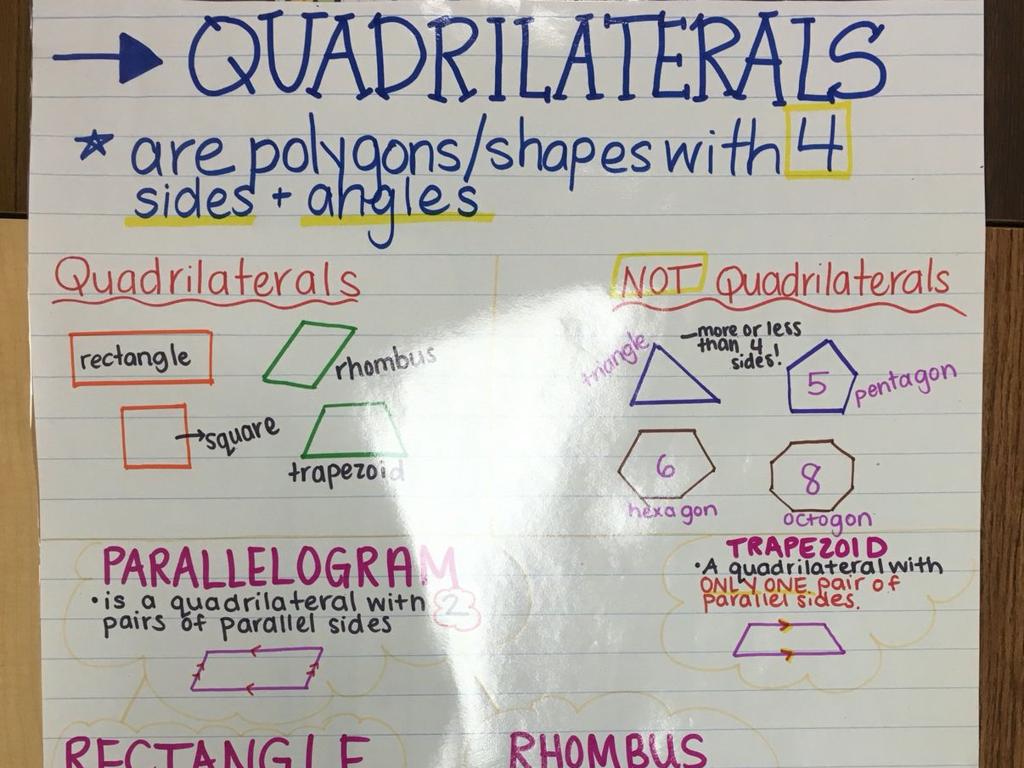Add Three Or More Integers
Subject: Math
Grade: Seventh grade
Topic: Operations With Integers
Please LOG IN to download the presentation. Access is available to registered users only.
View More Content
Adding Three or More Integers
– Understanding integers
– Integers include positive, negative numbers, and zero
– Importance of integers in math
– Used in various math and real-life situations
– Recap of integer concepts
– Review of addition, subtraction, and absolute value
– Adding multiple integers
– Learn to add integers with same or different signs
|
This slide introduces the concept of adding three or more integers, building on the students’ existing knowledge of integers. Start by ensuring that students understand what integers are, including the inclusion of zero, positive, and negative numbers. Emphasize the importance of integers in various mathematical and real-life contexts, such as temperature changes, financial transactions, and elevations. Recap the key concepts learned so far, including the rules for adding and subtracting integers, as well as understanding absolute value. The main focus of the lesson will be on the strategies for adding multiple integers, whether they have the same or different signs. Provide examples and encourage students to solve problems involving the addition of three or more integers.
Understanding Integers
– Define integers
– Integers include whole numbers, their negatives, and zero.
– Examples of integers
– Positive: 1, 2, 3; Negative: -1, -2, -3
– Zero: The integer pivot
– Zero is neutral, not positive or negative.
– Adding integers
|
Integers are the set of whole numbers including the negatives and zero. They are fundamental in math as they represent quantities that can be whole or divided, but not fractional. Examples of positive integers are 1, 2, 3, etc., and their negatives are -1, -2, -3, etc. Zero is a special integer that represents no quantity and is considered neutral. When adding integers, students should understand the rules for combining positive and negative numbers, using zero as a starting point. Encourage students to practice with real-life scenarios where they may encounter integers, such as temperatures above and below zero, or earning and spending money.
Adding Integers: Rules & Visualization
– Adding same sign integers
– Keep the sign, add the absolute values, e.g., -3 + (-2) = -5
– Adding different sign integers
– Keep the sign of the larger number, subtract the smaller value, e.g., -5 + 3 = -2
– Visualizing with a number line
– Use a number line to understand addition steps
– Practice with examples
|
This slide introduces the rules for adding integers, a fundamental concept in 7th-grade math. Start by explaining that when adding integers with the same sign, we keep the sign and add their absolute values. For integers with different signs, we keep the sign of the larger absolute value and subtract the smaller one. Demonstrate these rules with a number line to provide a visual aid, which can help students grasp the concept more concretely. Include practice examples for each rule to reinforce learning. Encourage students to solve these problems step by step and verify their answers using the number line.
Adding Three or More Integers
– Group integers by sign
– Sort numbers into positives and negatives
– Add positive integers
– Find the sum of all positive numbers
– Add negative integers
– Find the sum of all negative numbers
– Combine the sums
– Add the two sums to get the final total
|
When adding three or more integers, a systematic approach helps students avoid confusion. Start by grouping the integers based on their signs, separating the positive from the negative. Then, add up all the positive integers to get one sum and all the negative integers to get another. Finally, add these two results together to find the total sum. For example, with the integers -8, 3, -2, 7, and 5, group them into positives (3, 7, 5) and negatives (-8, -2). The sum of the positives is 15, and the sum of the negatives is -10. Combining these gives a final result of 5. This methodical process simplifies the task and helps students understand the concept of integer operations.
Adding Multiple Integers
– Add three positive integers
– Example: 3 + 4 + 5 = 12
– Mix of positive and negative integers
– Example: 6 + (-2) + 8 = 12
– Add two negatives and one positive
– Example: (-3) + (-6) + 2 = -7
|
This slide presents example problems to help students practice adding integers with different signs. Start with adding three positive integers to establish a foundation. Then, introduce a mix of positive and negative integers to show how the presence of a negative number changes the sum. Finally, present a scenario with two negative integers and one positive integer to demonstrate the effect of adding more negative than positive values. Encourage students to use a number line if they struggle to visualize the addition, and remind them of the rules for adding integers with different signs. Have students practice with similar problems and ensure they understand how to find the sum before moving on to more complex operations.
Practice Time: Adding Integers
– Let’s solve problems together
– Apply the rules for addition
– Remember to combine positives with positives, and negatives with negatives
– Questions are welcome
– Collaborative learning
– Work in pairs or groups to encourage discussion
|
This slide is designed to engage students in active practice of adding integers, reinforcing the rules they’ve learned. Encourage students to participate by working through problems as a class. Remind them of the key rules for adding integers, such as combining positives with positives and negatives with negatives, and how to deal with mixed signs. Create an open environment where students feel comfortable asking questions. Consider breaking the class into pairs or small groups to solve problems, fostering a collaborative learning atmosphere. Provide several example problems of varying difficulty and ensure to circulate the room to offer guidance and support. Possible activities could include peer teaching, using number lines, or creating real-life scenarios that require integer addition.
Class Activity: Integer Addition Relay
– Form teams for the relay
– Solve integer addition problems
– Each member tackles one problem
– Pass to the next after solving
– First team to finish wins!
– Ensure all answers are correct
|
This activity is designed to encourage teamwork and quick thinking as students practice adding integers. Divide the class into small groups, and provide each team with a set of integer addition problems. Each team member must solve one problem before passing the worksheet to the next person. The first team to complete all problems correctly wins a small prize. As a teacher, circulate to ensure students are engaged and to offer guidance if needed. Possible variations of the activity could include a mix of easy and challenging problems, using a timer to add pressure, or having students create their own problems for others to solve.
Wrapping Up: Adding Integers & Looking Ahead
– Recap: Adding integers
– Summarize key points from today’s lesson on adding integers.
– Homework: Practice worksheet
– Complete the provided worksheet on adding three or more integers.
– Upcoming: Subtracting integers
– Prepare for the next lesson on subtracting integers.
– Keep practicing!
|
As we conclude today’s lesson, ensure that students have a clear understanding of how to add three or more integers, including both positive and negative numbers. The homework worksheet is designed to reinforce these concepts and provide additional practice. Looking ahead, inform students that the next class will focus on subtracting integers, which builds on the knowledge they’ve gained today. Encourage them to review their notes and practice problems to solidify their understanding. The goal is to make them comfortable with integer operations as we move forward to more complex arithmetic.





